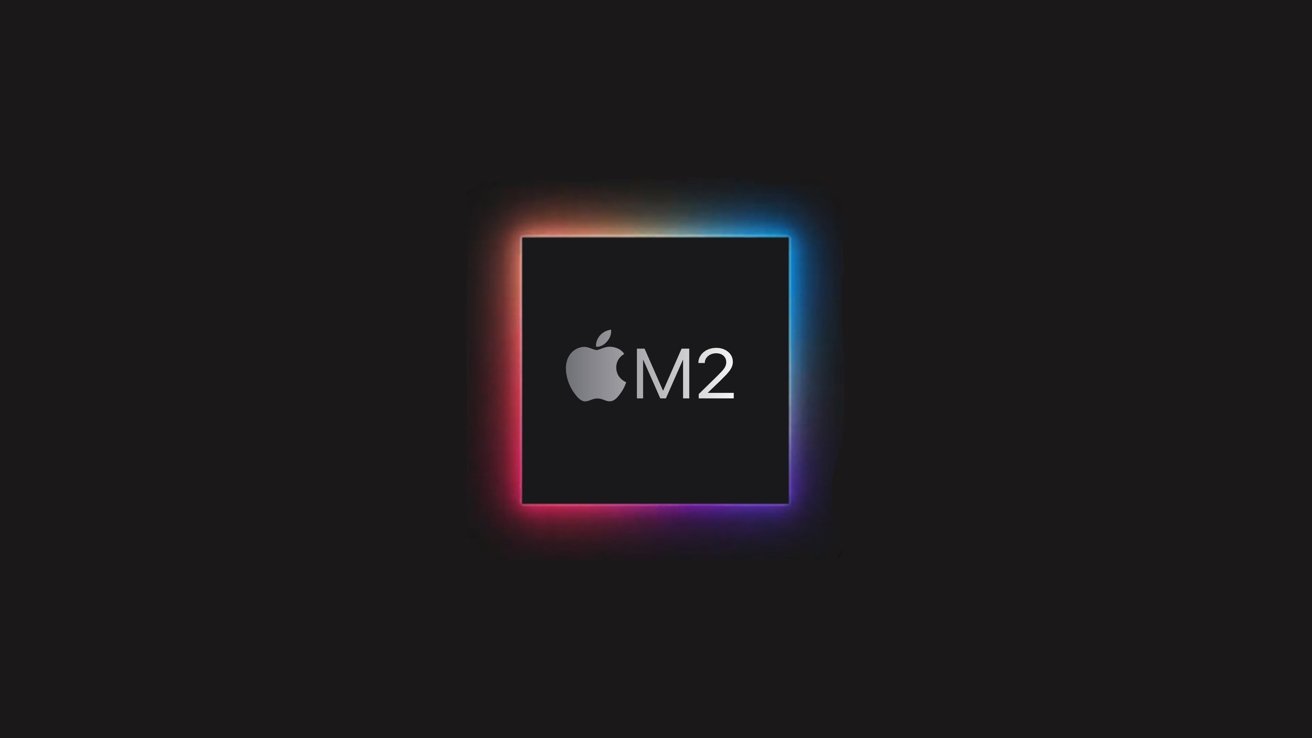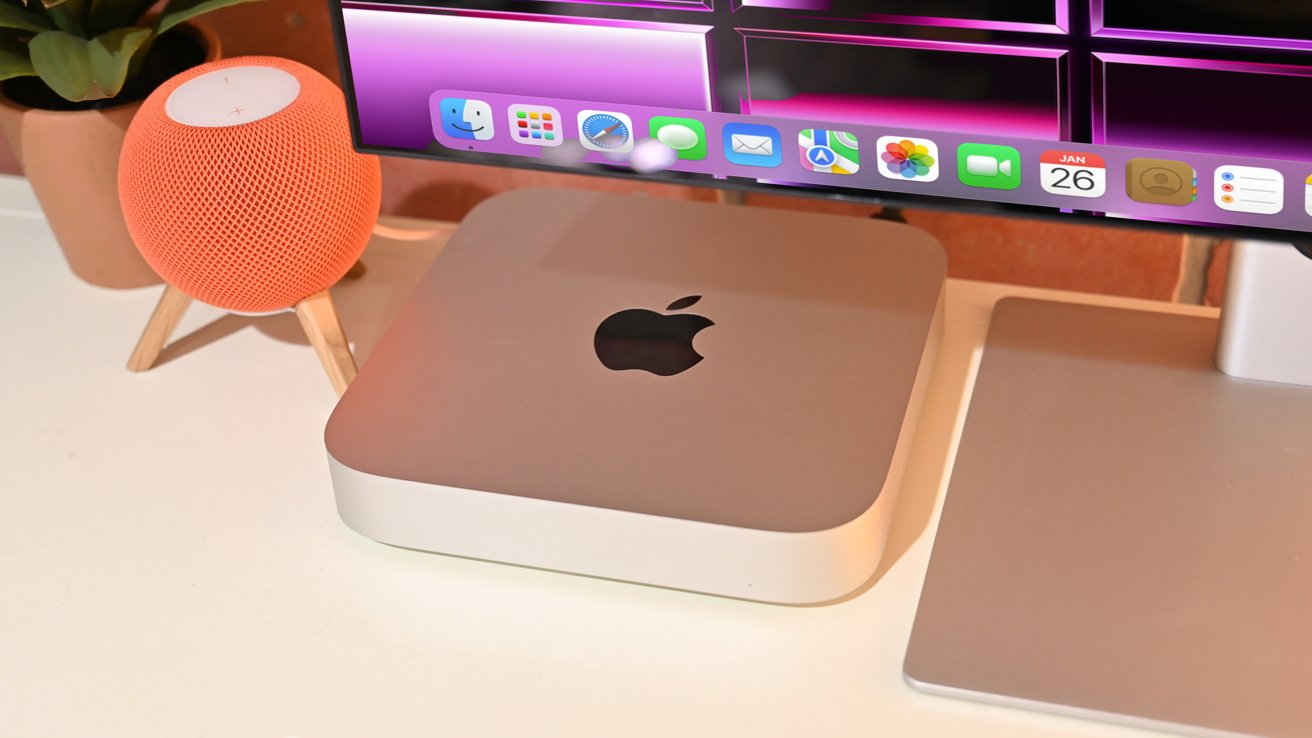Apple's platform architecture VP Tim Millet and product marketing VP Bob Borchers weigh in on the benefits of bringing chip design in-house.
In an interview with TechCrunch, Apple executives sat down to discuss Apple's shift to silicon and what it means for consumers, and where they hope to take the technology.
Millet notes how important a role the iPad Pro played in Apple's choice to switch its Mac lineup to M1.
"Once we started getting to the iPad Pro space, we realized that 'you know what, there is something there.' We never, in building the chips for iOS devices, left anything on the table," Millet says. "But we realized that these chips inside these other enclosures could actually make a meaningful difference from a performance perspective."
When it came time to release its next line of chips, the company wanted to push the boundaries of what was possible. Apple wanted to go bigger and better rather than offer meager performance gains with each new chip.
"The M2 family was really now about maintaining that leadership position by pushing, again, to the limits of technology. We don't leave things on the table," says Millet. "We don't take a 20% bump and figure out how to spread it over three years... figure out how to eke out incremental gains. We take it all in one year; we just hit it really hard. That's not what happens in the rest of the industry or historically."
Millet also touches on Apple's relationship with Intel and how the companies helped each other create better products.
"Intel was a great partner through the years where we shipped the Intel machines. They were very responsive; they really actually were inspired by the direction that Apple pushed them," says Millet. "And I think our products benefited from that interaction. Of course, our competitors' products benefited from that interaction as well sometimes."
Ultimately, though, the design teams at Apple realized there were significant benefits to bringing chip design in-house.
The pair also discussed gaming on Mac, which they admit has been somewhat limited. Still, Borchers believes that strides are being made with each new iteration of the M-series chips.
He cites Capcom's Resident Evil as proof that AAA developers are willing to bring their titles to Mac.
Millet says that Apple hasn't forgotten about gamers, either. The company has been mindful of the market since before the shift to silicon.
"The story starts many years ago, when we were imagining this transition. Gamers are a serious bunch. And I don't think we're going to fool anybody by saying that overnight we're going to make Mac a great gaming platform. We're going to take a long view on this."
The interview closes out with how Apple views getting its systems to as many consumers as it can. This is especially true of its entry-level offerings like the M2 Mac mini, which is priced $100 less than the M1 Mac mini — and $200 cheaper for students.
"We're product people at the end of the day, and we want to put our systems in as many hands as possible," says Borchers. "We feel like the Mac mini form factor is such a great way to unleash creativity and, frankly, goodness in the world that we wanted to be able to put it in as many people's hands as possible."
 Amber Neely
Amber Neely








-m.jpg)






 Marko Zivkovic
Marko Zivkovic
 Christine McKee
Christine McKee
 Andrew Orr
Andrew Orr
 Andrew O'Hara
Andrew O'Hara
 William Gallagher
William Gallagher

 Mike Wuerthele
Mike Wuerthele
 Bon Adamson
Bon Adamson




-m.jpg)



11 Comments
It's starting to become more of a viable gaming platform in terms of some of the hardware. Now they need to work on the software part, like a Vulkan layer or anything else that makes porting a game way easier. Or maybe they hope Epic will improve Unreal Engine for the Mac. Else we're stuck with the iOS games. So this will probably take another decade.
If they cite Resident Evil
WoW performance is great, but it's not a very taxing game, and Apple wrote most of the Metal code. They can't do that for every game.
It is true that the software compatibility is an issue for developers. However ultimately, developers will invest for the hardware the gamers are using. I am a hard core gamer. I use a PC for gaming and a Mac for everything else. Raw GPU performance is still inferior on Mac. Mac are very efficient, PC are not. NVidia is overclocking like hell their GPUs: laptops would drain their battery in minutes if not plugged-in and on the desktop side, they are talking of using two 120V 15A circuits (3,600W potentially) to feed your computer and a big part of the high end is water cooled at least for those that mind the noise generated by all the fans trying to cool everything down. From the benchmarks I have seen, MacBooks seems to sip up to 50W in power mode and desktops about 100W, so the efficiency crown goes to Apple hands down.
Mac are slim, cool and noiseless. PC are bulky, hot and noisy. But gamers do not care about that, they just want raw power, the more the better. And Mac still don't support ray tracing in hardware, honestly not many games support raw tracing, but you know the fear of missing out is strong for many gamers. Furthermore, because of the overclocking, an inexpensive gaming PC GPU will usually outperform a Mac GPU, Mac are still perceived to cost too much for what you get.
So the alignment between Apple philosophy and the gamers is not great. Gaming will always be marginal on Mac, and limited to the people already owning a Mac. The only segment, Apple hardware will put them ahead is mobile gaming. iPhone and iPad fill the needs for casual gamers in this segment, but their is no dedicated game devices for serious gamers like the Steamdeck, and I don't think Apple wish to enter this market either.
The hubris here is amazing. It's that arrogance that caught apple with its pants down in the 90s before Jobs' return. Even apple has its limitations; if they were pushing and innovating as much as they think they are, they might actually have a graphics chip capable of rudimentary ray tracing, rather than relying on inefficient software. A little humble pie or yankee crow once in a while never hurts.
Interesting interview. It's nice to hear a commitment to gaming and a realization that they have an opportunity here. I view that very positively -- it gives me real hope that Apple will achieve the gaming potential of the Mac.
Having said that.... the statement about the GPU having access to 96GB of RAM is weird. Right now you have to spend at least $3900 to get a Mac with Apple Silicon and 96GB of RAM. The number of people doing that is far smaller than needed for developers to design a game that takes advantage of that in any meaningful way. If we focus on Macs that nontrivial numbers of people actually buy, then we're looking at about 16 GB of RAM shared between CPU and GPU. That's really no more RAM available to the GPU than in a gaming PC. So this seems like a hyperbolic marketing comment disconnected from reality.
Unless, of course, he's talking about the future rather than the present. Will the Apple VR goggles have 96GB of RAM and some kind of crazy killer game that somehow takes advantage of that? Seems unlikely, but for this comment to make any kind of sense, it has to be indicative of their vision of the future, not the present.
One other thought -- a 20% increase in performance is not as rare in the x86 CPU world has he implies. Look at Ryzen 7950x vs 5950x (which despite model number is a one generation improvement). On multithread, the improvement in geek bench is 23091/ 16441 = 1.40. Actually, his comment only applies to Intel, and only during that awful period when Intel just kept re-spinning Skylake with minor tweaks of their 14nm process. That awful period was indeed awful but it's also over.